In Photos: Discoveries at the Site of the Pequot War in Connecticut
The Pequot War
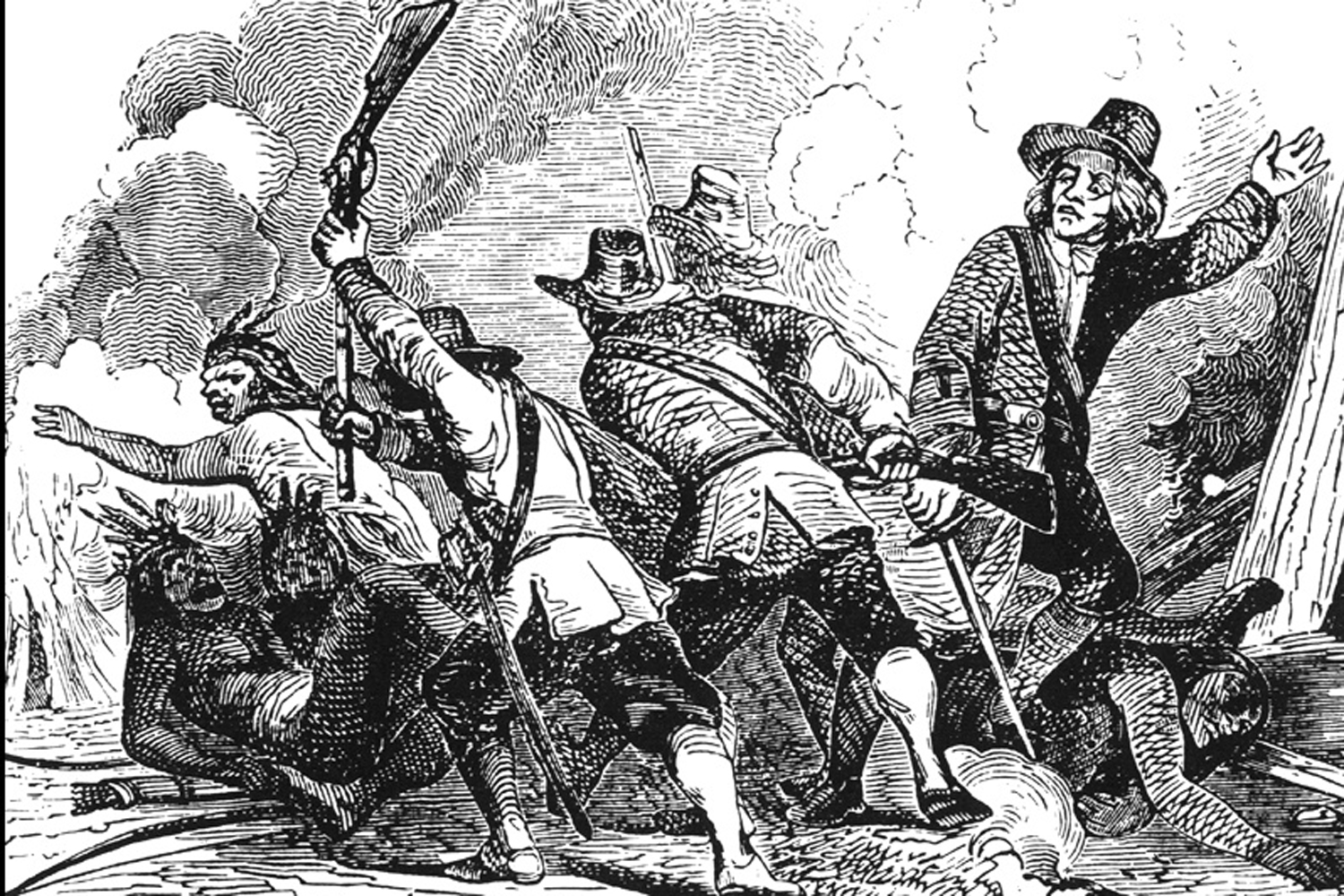
The Pequot War in New England from 1636 until 1638 was an early conflict between English Puritan settlers and native North Americans.
The Pequot people lived in what is now southeastern Connecticut before the arrival of Europeans in the area.
From the 1620s, the Pequot traded valuable furs, especially beaver, with Dutch traders, in return for European-made goods such as cloth, metal tools, and firearms. [Read more about the Pequot War]
English Settlement
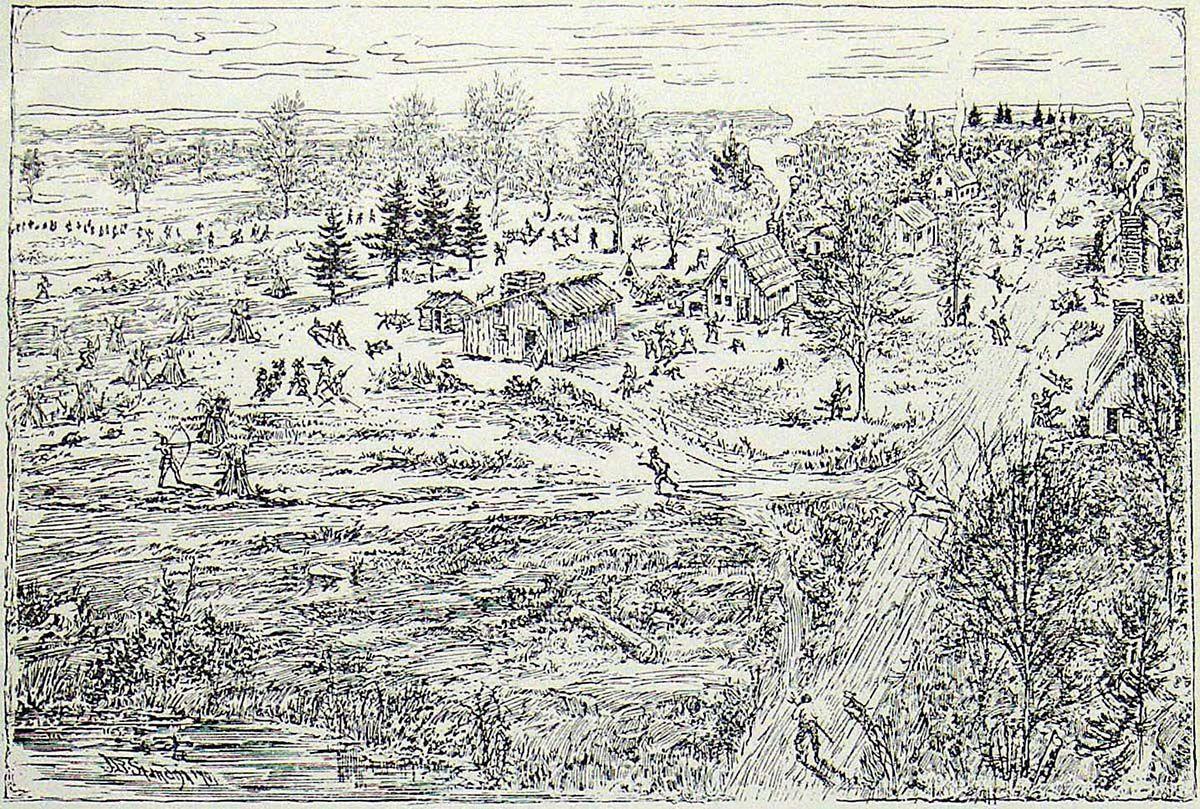
In the 1630s, English Puritan settlers arrived in Connecticut River Valley and started to acquire land for their farms and herds of cattle.
By 1635, there were several English settlements in the area, including the small towns of Wethersfield, Windsor and Saybrook. These towns initially relied on trade with Native Americans to supply them with food.
But in 1637, amid growing friction between the Pequots and the English, about 200 Pequot warriors attacked settlers near the town of Wethersfield, killing nine people and taking two girls hostage.
Mystic Massacre
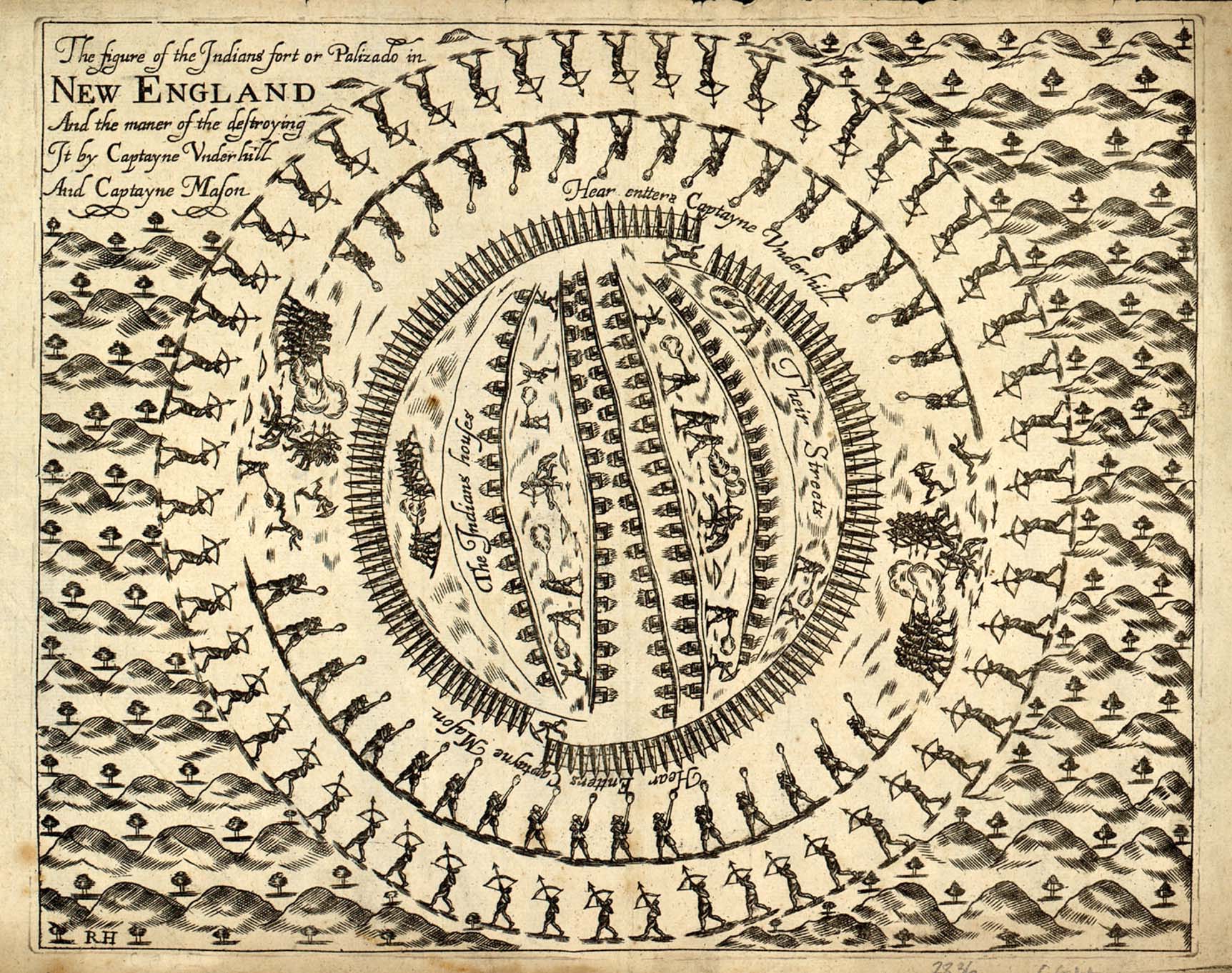
Although the two hostages were later released, the English settlers soon took revenge on the Pequot people for the killings at Wethersfield.
In May 1637, an army of English colonists and their Native American allies attacked the Pequot camp near the Mystic River and killed hundreds of people, effectively wiping out the Pequot tribe.
The Pequot War lasted until September 1638, when the few survivors of the tribe fled the area.
Museum Finds
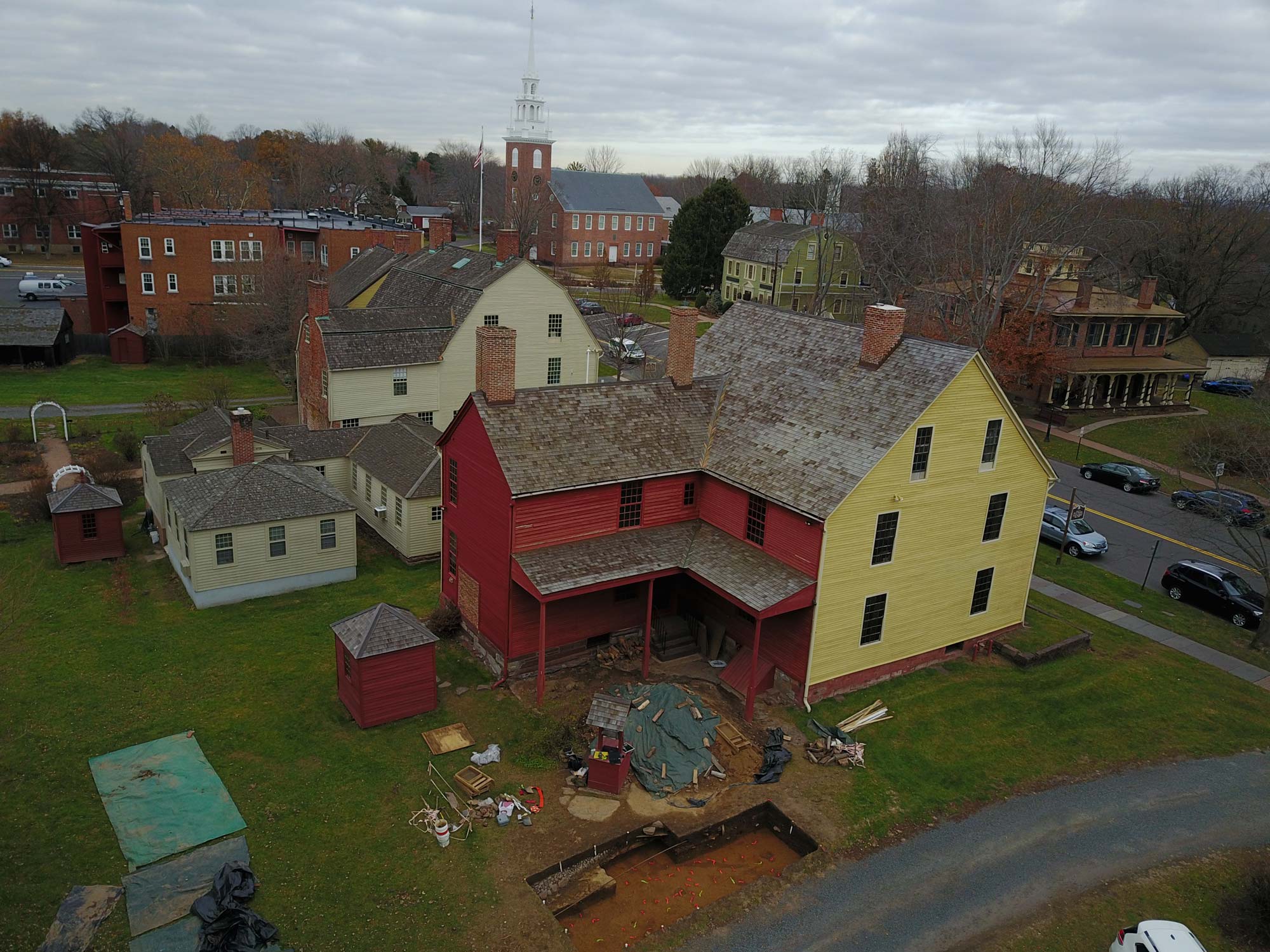
The Webb-Deane-Stevens Museum in Wethersfield is based around three houses built in the 18th century — the oldest is from the 1750s.
But now archaeologists have traced part of the site to the early 1630s — around the time of the Pequot War.
The artifacts they have found are some of the earliest traces of European settlement in North America. [Read more about the excavations]
Archaeological Excavations
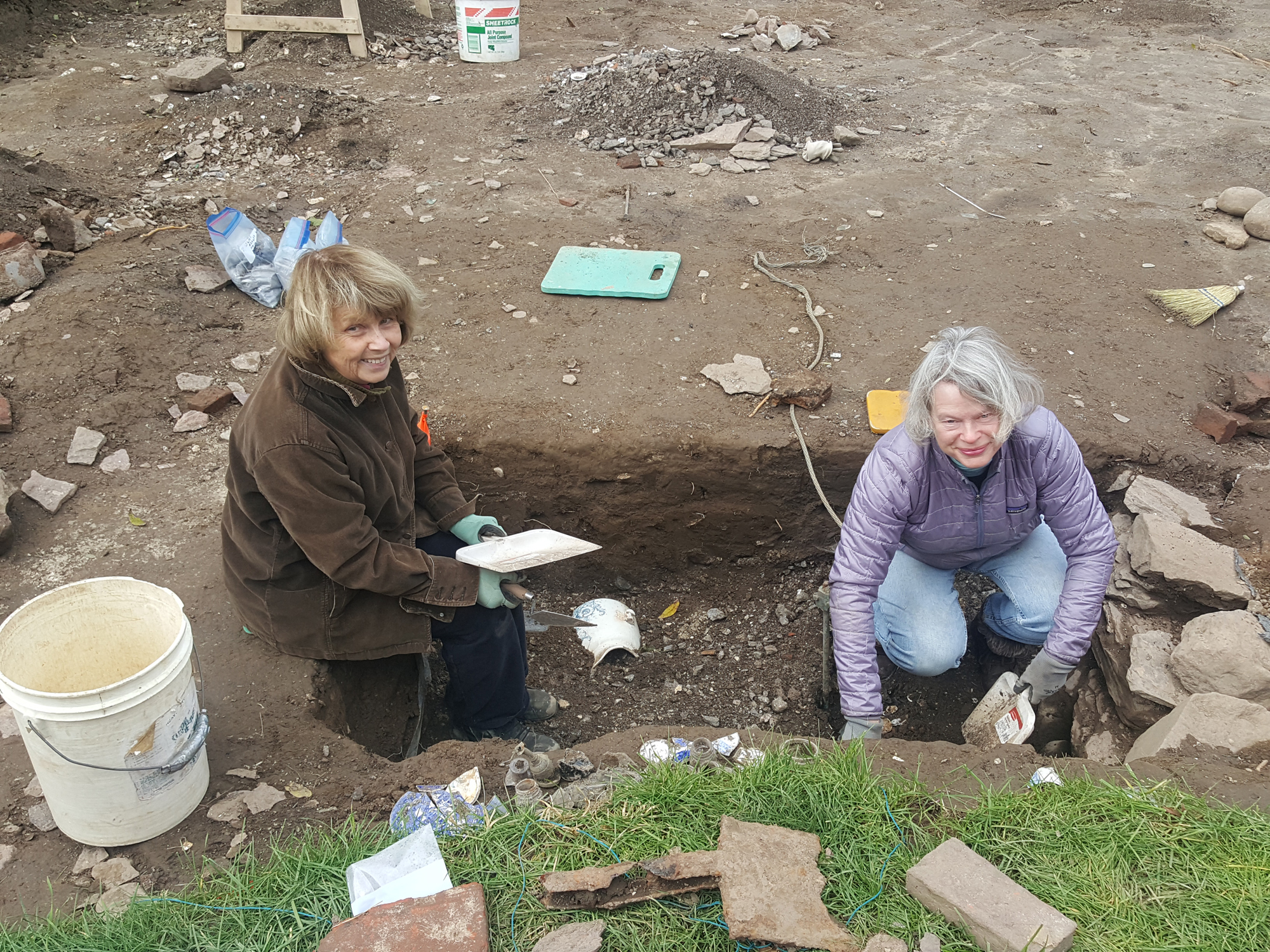
Excavations at the property have been carried out for the last three years, ahead of the construction of an education center for the Webb-Deane-Stevens Museum.
The excavations have been carried out by archaeologists from a local non-profit, the Public Archaeology Survey Team, and funded by the state of Connecticut and the National Society of the Colonial Dames of America, which owns and operates the museum.
Buried Treasures
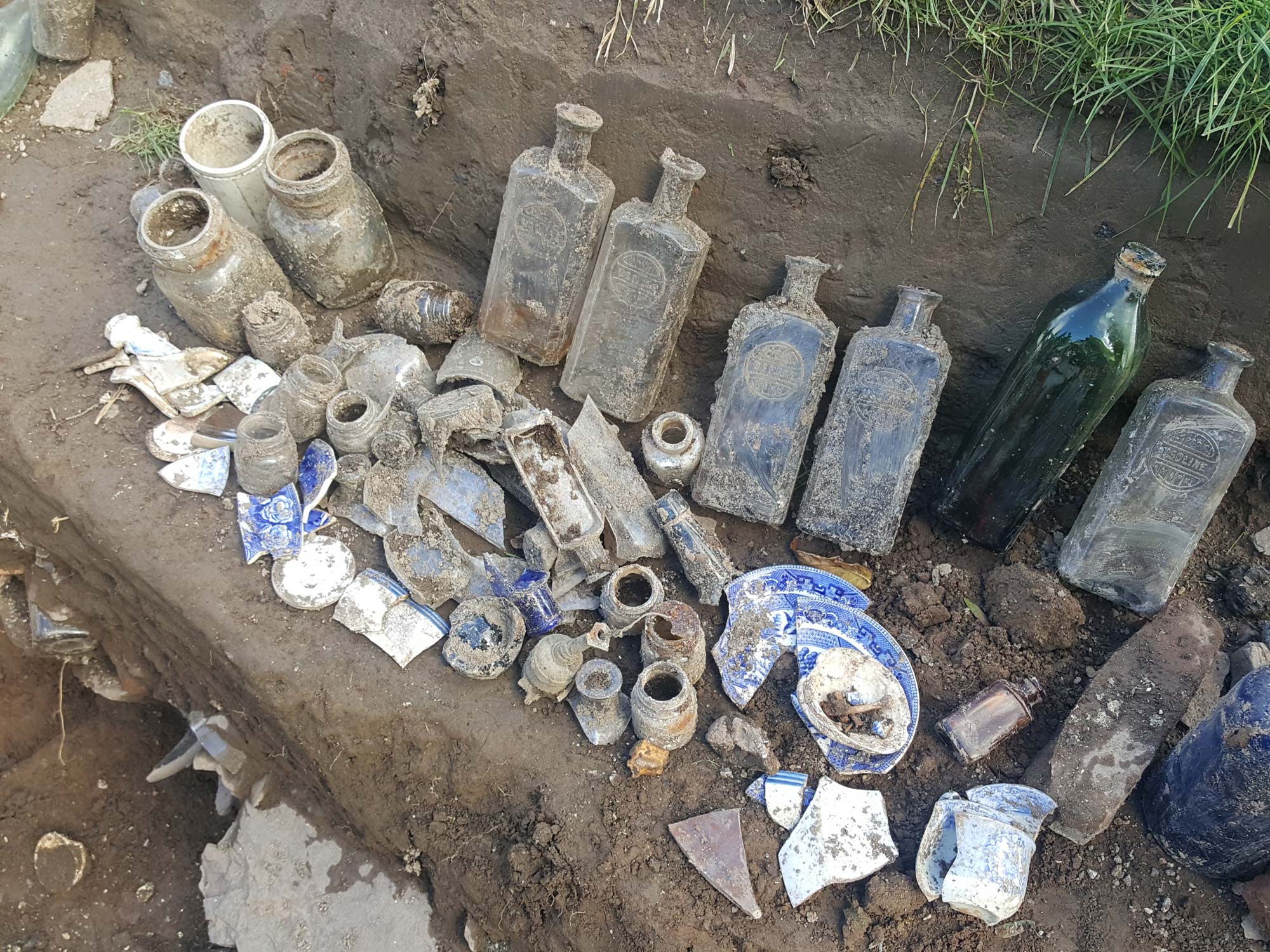
The artifacts found by archaeologists at the site span more than 300 years, until the 1920s.
Several of the items found show that the site was occupied by Europeans from the 1630s — more than 100 years before the colonial houses of the museum were built after the 1750s.
17th-century windows

The finds include diamond-shaped panes of window glass from the 17th century, along with strips of lead that were used to join the panes together.
The glass is badly discolored after almost 400 years in the ground.
This image also shows two brass tacks found in the 17th century layers of the excavations.
Sign up for the Live Science daily newsletter now
Get the world’s most fascinating discoveries delivered straight to your inbox.
400 Year-Old Fastenings
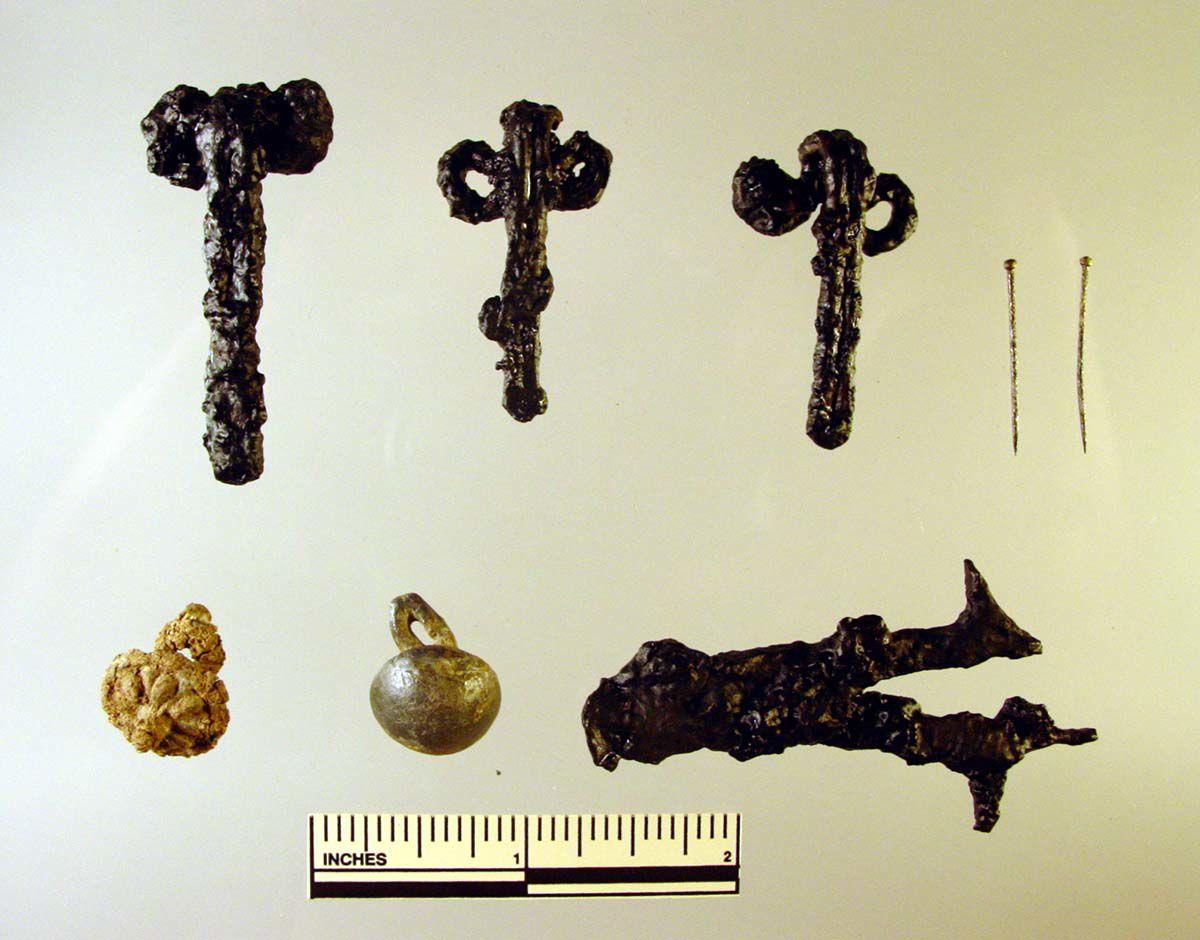
The artifacts from the 17th century found at the site also include small metal items of clothing — although the clothes themselves have long since eroded away.
This photograph shows iron clothing hooks, metal buttons, and what is left of a pair of embroidery scissors.
Wooden Palisade
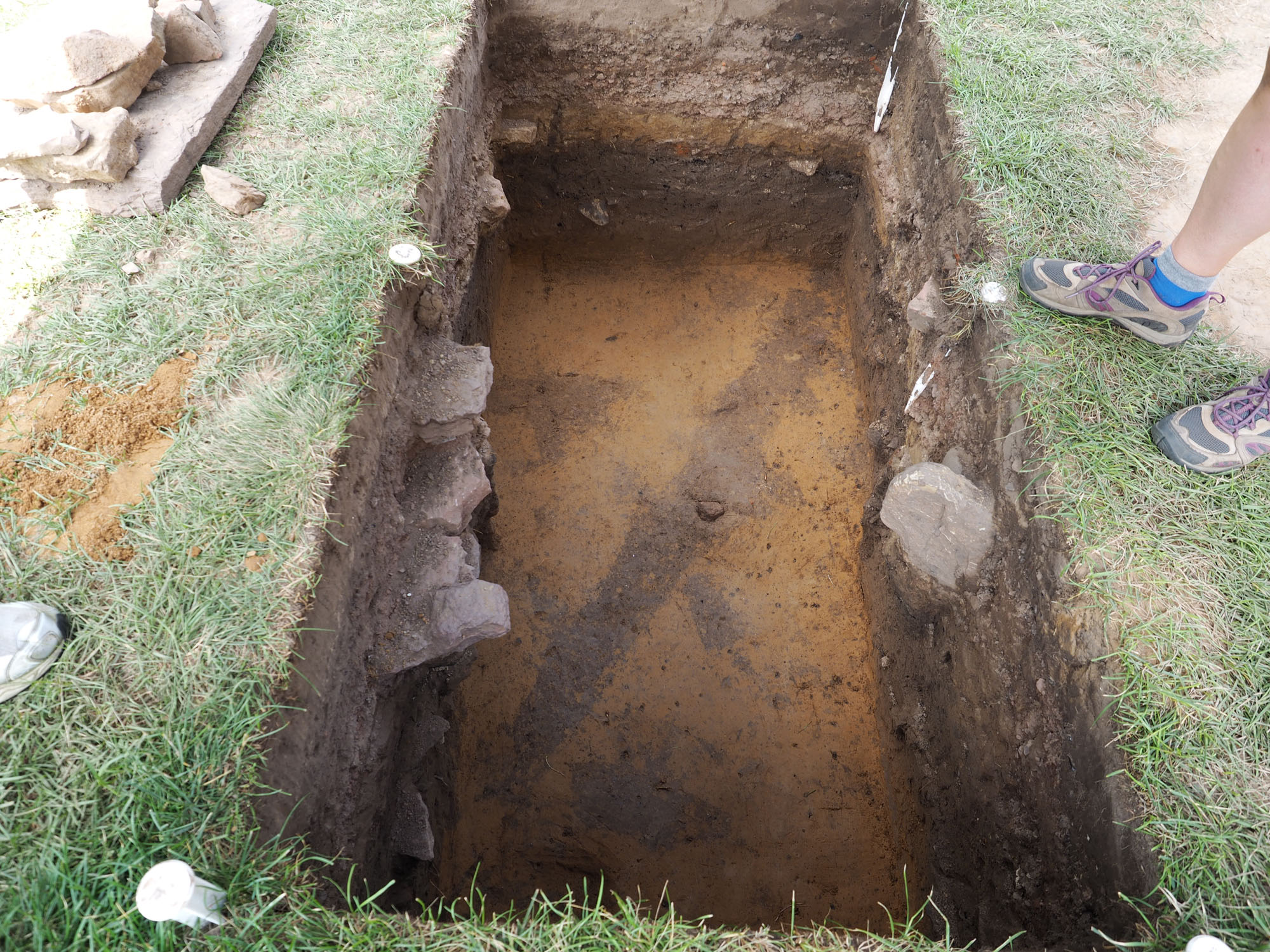
One of the most intriguing finds has been the remains of a wooden palisaded wall in the lowest archaeological layers of the dig, corresponding to the 1630s, possibly during the Pequot War.
Archaeologists will investigate the palisade further, to try to determine if it guarded just one or several houses of the settlement from violent attacks.
17th Century Coins
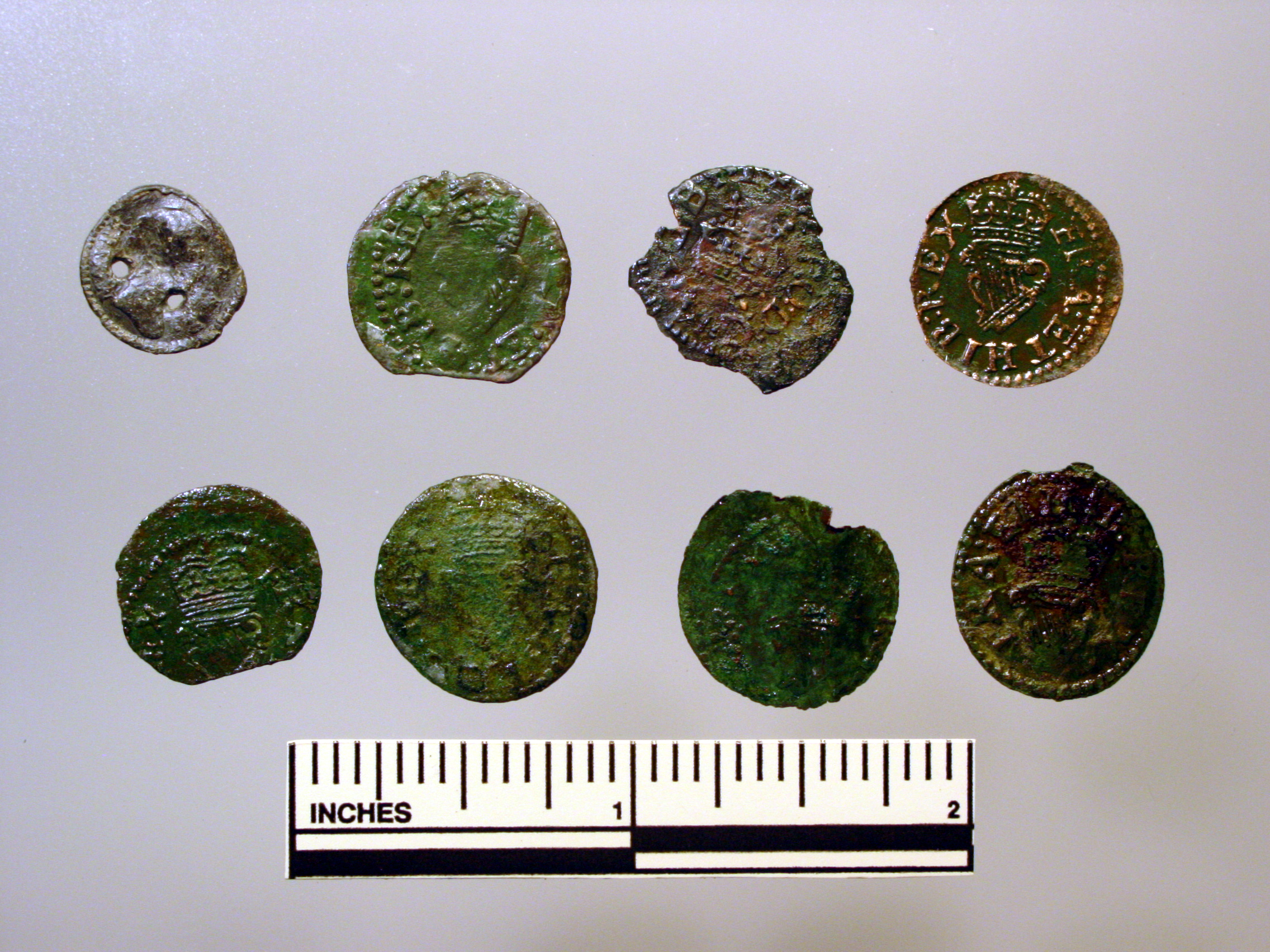
But the archaeologists have also found signs that the English occupants of the site were trading with Native Americans.
These include several small coins from the early 17th century. Most are farthings from the reign of King Charles I, minted after 1625, but one farthing is from the reign of James I, and would have been minted sometime after 1603.
Wampum Pieces
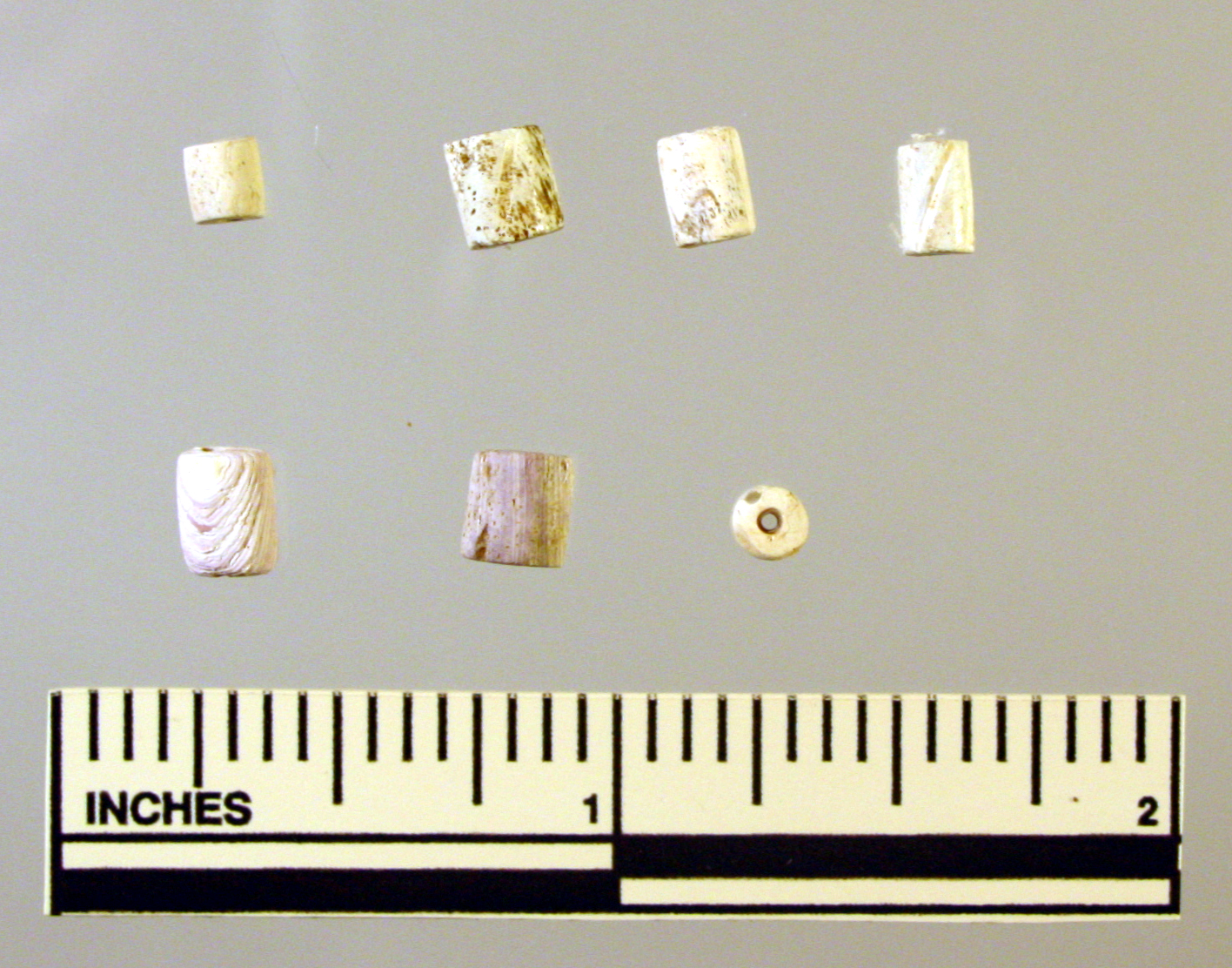
As well as coins used by English settlers, the archaeologists have also found about 20 pieces of wampum — cylindrical beads made from seashells that were traditionally used by Native Americans as currency, among other uses.
Wampum would have been preferred over coins by Native Americans, who initially traded food to the settlers in return European-made goods. But it was also used by settlers as currency, who suffered from a shortage of coins.
Tom Metcalfe is a freelance journalist and regular Live Science contributor who is based in London in the United Kingdom. Tom writes mainly about science, space, archaeology, the Earth and the oceans. He has also written for the BBC, NBC News, National Geographic, Scientific American, Air & Space, and many others.










